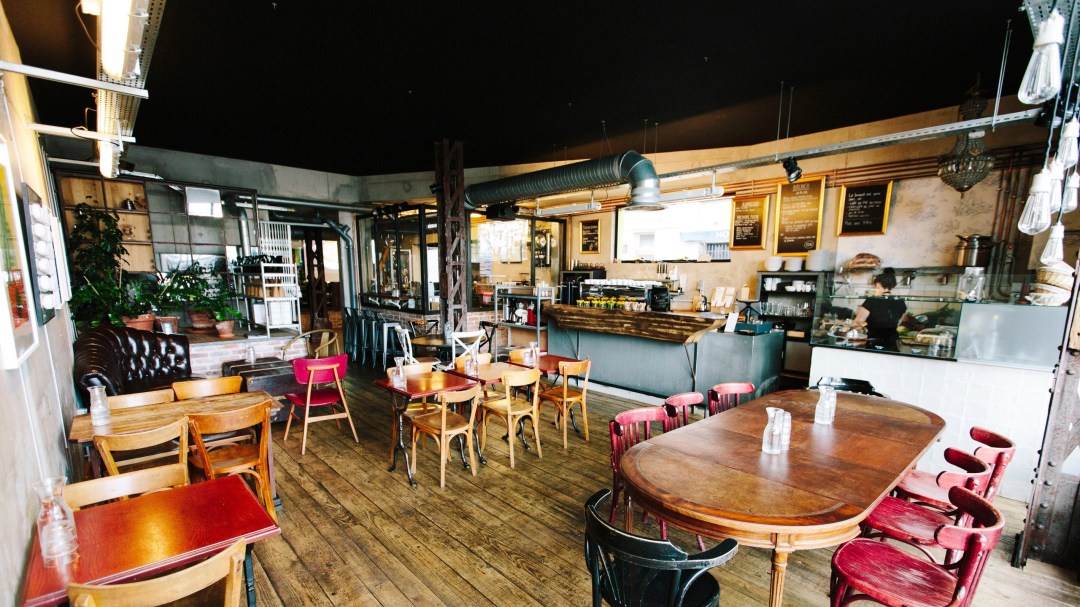Feast Your Eyes On Mouthwatering Lomi Restaurant Photos: Get Ready To Indulge!
Lomi Restaurant Photos: Capturing the Essence of Filipino Cuisine
Hello Foodies, are you ready to embark on a culinary journey that will tantalize your taste buds? Look no further than lomi, a beloved Filipino dish that is both hearty and flavorful. And what better way to appreciate this dish than through beautiful photographs that capture every savory detail? That’s where lomi restaurant photos come in. In this article, we will explore the world of lomi and how these photos showcase its unique qualities.
What is Lomi?
Lomi is a noodle soup that originated in the Batangas province of the Philippines. It is made with thick egg noodles, meat (typically pork), vegetables, and a flavorful broth. The dish is often topped with crispy pork bits, hard-boiled eggs, and green onions. Lomi is a comfort food that is perfect for chilly nights or when you need a quick pick-me-up. Its popularity has spread beyond Batangas, and it is now a staple in Filipino cuisine.
2 Picture Gallery: Feast Your Eyes On Mouthwatering Lomi Restaurant Photos: Get Ready To Indulge!


The Origin Story of Lomi
The exact origin of lomi is unclear, but some say it was created during the Japanese occupation of the Philippines in World War II. The story goes that food was scarce during this time, and people had to be resourceful with what they had. Lomi was born out of a need to stretch limited ingredients and create a filling dish.
The Ingredients of Lomi

Image Source: tripadvisor.com
The key to a delicious lomi is in the broth. It is often made with pork bones, onions, garlic, and ginger. The noodles are also important, as they are thicker than traditional egg noodles. Meat is typically added to the soup, along with vegetables like cabbage, carrots, and mushrooms. Some variations of lomi also include seafood like squid and shrimp.
The Flavors of Lomi
Lomi is a dish that packs a punch in terms of flavor. The broth is savory and rich, with a hint of sweetness. The noodles are chewy and add texture to the soup. The meat and vegetables also contribute to the overall taste, creating a symphony of flavors in every bowl.
Lomi vs. Other Filipino Noodle Soups
While lomi is a popular Filipino noodle soup, it is not the only one. Other popular noodle soups in the Philippines include pancit, mami, and sotanghon. Each soup has its own unique flavor profile and ingredients, making it a diverse culinary landscape. However, lomi stands out because of its thicker noodles and heartier broth.
The Best Places to Try Lomi

Image Source: cntraveler.com
There are plenty of restaurants and eateries in the Philippines that serve lomi. Some of the best places to try it include Loming Batangas sa Lemery, Jorlyn’s Lomi House, and Lomi King in Lipa City. These establishments have perfected the art of lomi-making and offer a variety of toppings to customize your soup.
Lomi Restaurant Photos: Capturing the Essence of the Dish
Lomi restaurant photos are a feast for the eyes, showcasing the beauty and complexity of the dish. When taken correctly, these photos can make your mouth water and convince you to try lomi for the first time. The photos capture the steam rising from the soup, the noodles entwined with the meat and vegetables, and the toppings that add an extra layer of crunch and flavor. Lomi restaurant photos not only entice diners but also serve as a way to preserve the dish’s cultural significance.
Who Loves Lomi?
Lomi is a dish that is loved by Filipinos of all ages. It is a comfort food that brings back memories of home and family. Lomi is also a great way to introduce foreigners to Filipino cuisine, as it is accessible and flavorful.
The Role of Lomi in Filipino Culture
Lomi is more than just a dish. It is a representation of Filipino culture and tradition. Filipinos often gather around a steaming bowl of lomi during special occasions like birthdays, fiestas, or family reunions. The shared experience of enjoying lomi creates a sense of community and belonging.
Lomi in Pop Culture
Lomi has made its way into Filipino pop culture, with songs like “Lomi Lomi” by Vhong Navarro and “Lomi” by Kamikazee. These songs celebrate the dish and its significance in Filipino culture.
Lomi as an Inspiration
Lomi has also inspired other dishes and cuisines. In the United States, Chef Dale Talde created a dish called “Pork and Lomi” for his restaurant, Talde. The dish features pork belly, crispy garlic, and lomi noodles in a savory broth.
When to Eat Lomi?
Lomi is a versatile dish that can be eaten at any time of the day. Some people enjoy it for breakfast, while others prefer it for lunch or dinner. Lomi is also a popular midnight snack, perfect for nighttime cravings.
Lomi for Breakfast
Starting your day with a bowl of lomi is a hearty and filling way to fuel your body. The soup provides warmth on chilly mornings, and the noodles and meat give you the energy you need to start your day.
Lomi for Lunch
Lunchtime is the perfect time to enjoy a steaming bowl of lomi. It will keep you full for hours and provide you with the sustenance you need to power through the rest of your day.
Lomi for Dinner
Lomi is a comforting dish that is perfect for winding down after a long day. The savory broth and chewy noodles are soothing to the soul, and the toppings provide a satisfying crunch.
Lomi as a Midnight Snack
Feeling peckish in the middle of the night? Lomi is the perfect snack to satisfy your hunger pangs. It is easy to prepare and can be customized to your liking.
Where to Find Lomi?
As mentioned earlier, there are plenty of places in the Philippines where you can find lomi. From street vendors to high-end restaurants, lomi is a dish that is widely available. You can also find lomi in Filipino communities around the world.
The Best Places to Find Lomi in the Philippines
If you want to taste the best lomi in the Philippines, head to the Batangas province. Here, you will find numerous establishments that specialize in lomi. Some of the best places to find lomi in Batangas include Loming Batangas sa Lemery, Jorlyn’s Lomi House, and Lomi King in Lipa City.
Lomi Around the World
Thanks to the Filipino diaspora, lomi can be found in various countries around the world. In the United States, you can find lomi in Filipino restaurants in cities like Los Angeles, San Francisco, and New York. In Canada, Filipino restaurants in Toronto and Vancouver also serve lomi.
Why Try Lomi?
There are many reasons why you should try lomi. Here are just a few:
Lomi is Comfort Food
There’s nothing like a comforting bowl of soup to make you feel better on a bad day. Lomi is the ultimate comfort food that warms both your belly and your heart.
Lomi is Delicious
Lomi is a dish that packs a punch in terms of flavor. The rich broth, chewy noodles, and savory meat and vegetables create a symphony of flavors that will leave you wanting more.
Lomi is Easy to Customize
One of the great things about lomi is that you can customize it to your liking. Add more vegetables or meat, adjust the level of spice, or try different toppings. The possibilities are endless!
Lomi is a Part of Filipino Culture
Lomi is more than just a dish. It is a representation of Filipino culture and tradition. By trying lomi, you are experiencing a piece of Filipino history and cuisine.
Lomi is Instagrammable
Let’s be real – we all love taking photos of our food. Lomi is a photogenic dish that looks great on any Instagram feed. Whether you’re a food blogger or just a foodie, lomi restaurant photos will make your followers jealous.
How to Make Lomi?
If you want to try making lomi at home, here’s a basic recipe:
Ingredients:
1 lb pork belly, sliced
1 onion, chopped
4 cloves garlic, minced
1 inch ginger, sliced
1 cup sliced shiitake mushrooms
4 cups chicken broth
1 pack of lomi noodles
Salt and pepper to taste
Instructions:
In a large pot, sauté the pork belly until browned. Remove from the pot and set aside.
In the same pot, sauté the onion, garlic, and ginger until fragrant.
Add the sliced mushrooms and sauté for another 2 minutes.
Pour in the chicken broth and bring to a boil.
Add the lomi noodles and cook for 5 minutes or until noodles are cooked.
Season with salt and pepper to taste.
Serve hot with your desired toppings. Enjoy!
FAQ
1. Is lomi a healthy dish?
Lomi can be healthy if prepared with the right ingredients. However, it is often high in fat and sodium, so it should be consumed in moderation.
2. Can I make lomi with other meats?
Yes, you can use chicken or beef instead of pork in your lomi. You can also add seafood like shrimp or squid.
3. Can lomi be frozen?
Lomi can be frozen, but it is best to freeze the broth and noodles separately. This will prevent the noodles from becoming mushy when reheated.
4. What are some good toppings for lomi?
Some popular toppings for lomi include crispy pork bits, hard-boiled eggs, green onions, and fried garlic.
5. Can I make lomi without noodles?
If you want to make a low-carb version of lomi, you can replace the noodles with zucchini noodles or shirataki noodles.
Conclusion
We hope this article has given you a deeper appreciation for lomi and its place in Filipino cuisine. Lomi is a dish that is both delicious and comforting, and its restaurant photos capture its essence perfectly. Whether you try it at a restaurant or make it at home, lomi is a dish that is sure to satisfy your cravings.
Take Action: Try Lomi Today!
What are you waiting for? Head to your nearest Filipino restaurant or try making lomi at home. We guarantee that you won’t be disappointed. Happy eating!
Final Remarks
This article was written for informational purposes only. The views and opinions expressed in this article are those of the author and do not necessarily reflect the official policy or position of any agency or organization. The information in this article is not intended to diagnose, treat, cure, or prevent any disease. Please consult a healthcare professional before making any dietary changes.
This post topic: Restaurant



